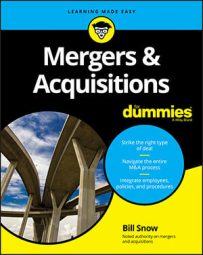Five times EBITDA is an M&A industry standard for company valuation. Nobody knows where 5X came from, but all you need to know is that it’s a de facto standard. In good or bad times, that multiple may be a bit higher or lower.
Although multiples of EBITDA is a typical valuation technique, it’s not the only method to determine a company’s valuation. Various industries may use different valuation conventions, including the following:
Asset value: In this example, the Buyer pays a price based on the value of the assets on the company’s balance sheet. This technique works best for companies with a lot of inventory and/or manufacturing equipment. Asset value is usually not a good idea for service businesses because they don’t have inventory and manufacturing equipment.
Multiple of gross profit: Gross profit (the difference between revenue and the cost of goods sold) can be a suitable method to determine valuation, especially if the company is losing money. Using gross profit can also be a suitable method to determine an earn-out.
Multiple of revenue: This simple valuation method is a good choice for a company that’s losing money. Just apply a multiple to the revenue of the company. Top line revenue is also used in many earn-outs.
Discounted cash flow (DCF): This technique is one of those fancy-pants MBA valuations often used in the venture capital world.
You estimate or project a business’s cash flow (usually earnings minus capital expenditures) for a period of time, often five years. You then determine the terminal value, the expected future sale price of the business at the end of that period, and figure out the present value of this expected cash flow by discounting, or lowering, the future value of those cash flows.
Basically, you’re figuring out the current equivalent of that future cash flow figure. That becomes the price the Buyer is willing to pay. The higher the cash flows, the higher the price.
Multiple of contribution margin: This advanced valuation method utilizes the contribution margin, the amount of cash flow a Buyer can expect after making changes to the business, such as eliminating some expenses by moving operations from the Seller’s facility to the Buyer’s facility. This approach isn’t for beginners.
These sundry techniques often don’t result in the standard 4X to 6X EBITDA range. Multiples may be 2X, 1X, or even less than 1X. Revenue, gross profit, and contribution margin will all be larger than EBITDA.

